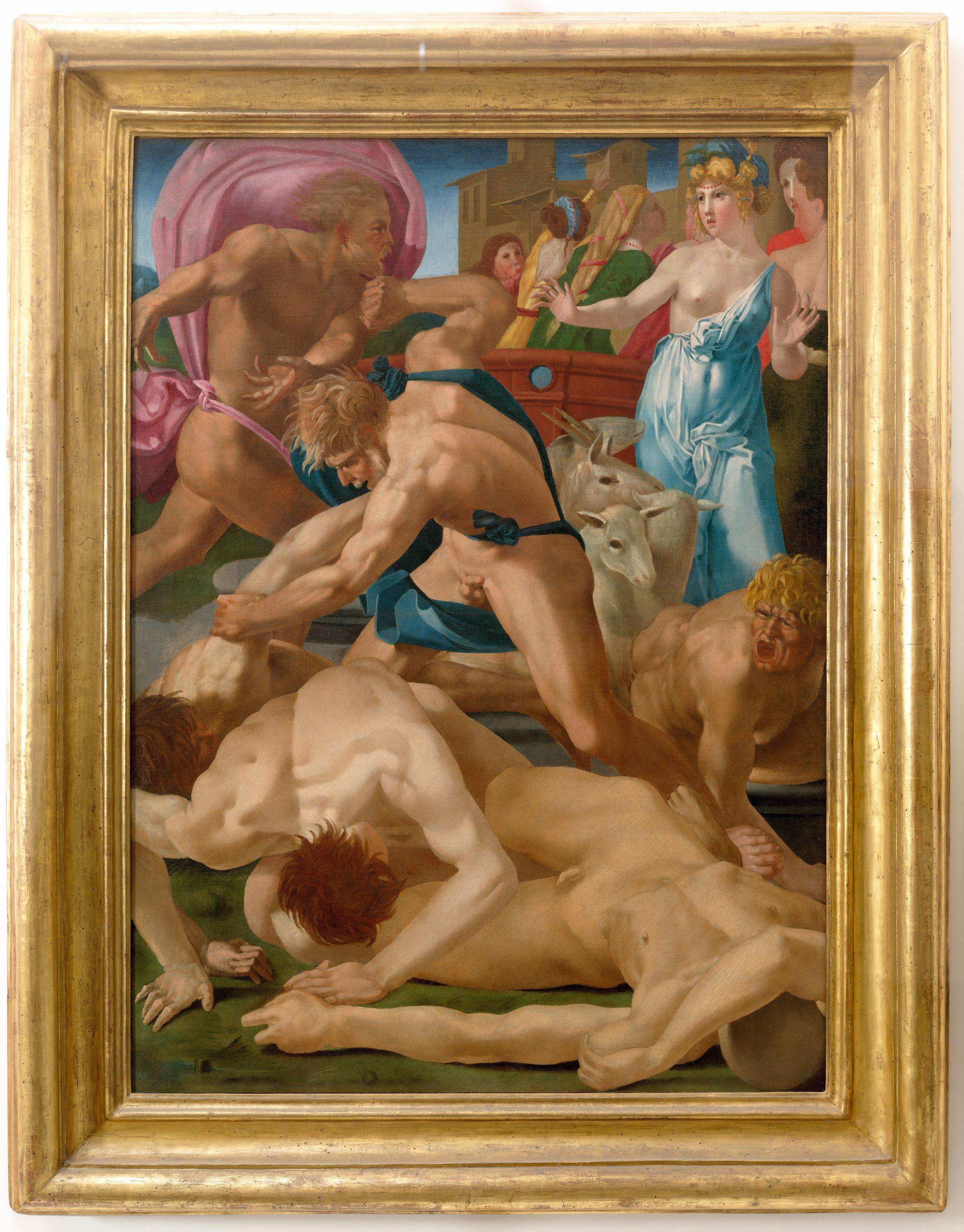Moses Defends the Daughters of Jethro
Giovanni Battista di Jacopo, known as Rosso Fiorentino (Florence, 1495 – Paris, 1540)
Giovanni Battista di Jacopo, nicknamed Rosso Fiorentino (“rosso” means red) due to the colour of his hair, trained in the workshop of Andrea del Sarto alongside his peer, Pontormo. From his early Florentine works, he displayed a particularly original style, characterised by a strong anti-classical energy, which tended to break out of the balanced Renaissance framework and favour innovative formal solutions with a powerful, dramatic charge. In 1524, he moved to Rome, where the exasperated expressive research of his previous years gave way to a sophisticated, intellectual formal elegance. Following the Sack of Rome in 1527, he travelled around many Italian cities, eventually reaching France. There, he secured a position at the court of King Francis I, who commissioned him to decorate the palace in Fontainebleau, the Gallery of which would become a cornerstone of international Mannerism.
In Rosso’s biography, Vasari describes “a painting of several beautiful nude figures, in a story of Moses when he kills the Egyptian, depicting highly commendable things; and I believe it was sent to France”. An archival document, recently rediscovered, confirms Vasari’s story. The painting is believed to have been painted by Rosso just before he left Rome. It is thought to have been commissioned by Giovanni Bandini, who belonged to the faction that opposed the Medici, and subsequently sent to France as a gift for King Francis I. Between 1568 and 1588, the canvas returned to Florence where it became part of the collections of Don Antonio de’ Medici, son of the Grand Duke Francesco and Bianca Cappello.
According to the most accredited interpretation, the painting portrays the agitated sequence of different events that make up the biblical episode from which it takes its name. After killing an Egyptian who had mistreated an Israelite woman, Moses flees to the desert and stops to rest at a well in Median, where the priest’s seven daughters stop to draw water for their father’s flock. Some shepherds arrive and want to drive the young girls away, but Moses leaps to the women’s defences, making the bullies flee and drawing the water from the well for them.
In the foreground Moses, depicted like a semi-nude Herculean hero, is tackling the shepherds, who lie on the ground, defeated. The victorious hero appears again in the background, running towards Zipporah, his future bride, who is still frightened. The biblical story is completed by the well in the background and the other six sisters, fleeing, fearful, towards the city.
Rosso Fiorentino interprets the holy episode as a scene of nude figures fighting. Their powerful bodies, strained in an exasperated dynamism, resemble the tangle of soldiers in Michelangelo’s Battaglia di Cascina cartoon. The longitudinal view of the composition and the use of the space divided into different vertical perspectives accentuate the violent effect of the struggle. The brutality of the fight is counterbalanced by the sensual suppleness of Zipporah, who is elegantly attired and swathed in a close-fitting robe that shows her figure and bares one of her breasts.
The gift of this painting would certainly have been appreciated by King Francis I, a cultured, intellectual patron of the arts: the characterising expressive force and theatrical gestures of its characters are the same as those he would soon have admired in his Gallery in Fontainebleau, where Rosso replicated the postures of some of the nude figures in this work.

